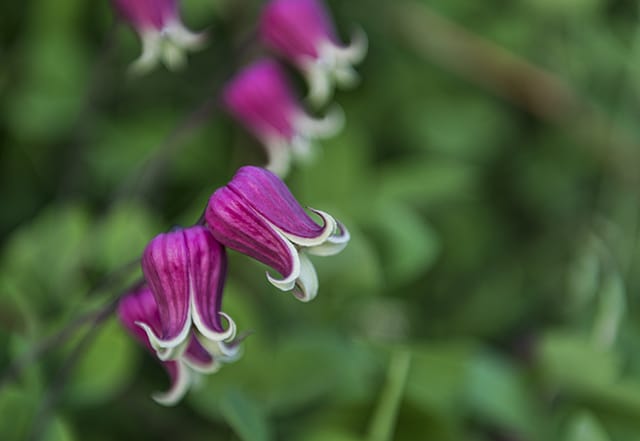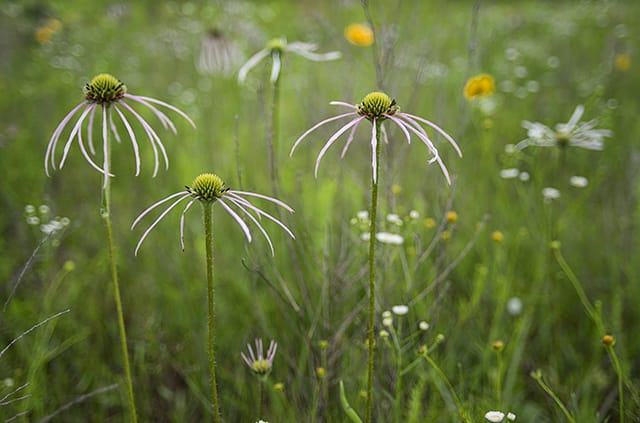

Uh oh...
It appears that you're using a severely outdated version of Safari on Windows. Many features won't work correctly, and functionality can't be guaranteed. Please try viewing this website in Edge, Mozilla, Chrome, or another modern browser. Sorry for any inconvenience this may have caused!
Read More about this safari issue.

April showers bring May flowers! With the abundance of rain we’ve had in Arkansas, this spring is yielding lots of flowers. Springtime flowers in Arkansas are the perfect photography subject. Flowers never talk back, and they never ask you, “how many more pictures are you going to take?”

Photographing flowers is one of the most enjoyable and rewarding types of photography that I participate in. Flowers are readily available, colorful and easy to photograph. They serve as a record of the gardener’s efforts. And flowers can be shot during any season of the year.

So, here are a few tips for getting great flower photos. What is the best camera? Any camera can be used for flower photography. My first choice will always be a camera that I can control, like a DSLR or a mirrorless. But point and shoot cameras have excellent preset settings, and newer smartphone cameras take very good pictures. If you are using a DSLR or mirrorless, use wide depth of field (aperture of f-8 to f-22) if you want everything in the frame to be in focus. If you prefer fewer items in focus, use a narrow depth of field (aperture of f-4 to f-2).

Point and shoot cameras are small, light and because of their compact size are ideal for photographing flowers. For point and shoot cameras, use the setting designated for flowers. For cell phone cameras use the portrait setting. If you use the portrait setting the flower will be in focus, and the rest of the scene will fade into the background.

What lens will make the best flower images? The best answer is the one you can afford. My favorite lens for flower photography is a lens that will focus if the subject is very close or a macro lens. Macro lenses offer the ability to get life-size magnification, pin-sharp focus on the subject and a smooth, creamy background.

Tripod or not? My answer is always yes; however, as my camera equipment has become smaller, lighter and more sensitive to light, I use my tripod a little less. Sometimes there are places where you don’t want to disturb what you find. I recommend anyone who is serious about photography to invest in a good tripod.

The best lighting for flowers is soft and filtered light. This type of light is available every single day – early in the morning before 9 a.m., and in the early evening after 4 p.m. On overcast days, you can shoot flowers all day long. The soft diffused light of a cloudy day makes the color of flower petals pop.

As with any form of photography, achieving a pleasing composition is the key to good images. Highlight the subject, get close, and fill the camera frame. Don’t include anything in the picture that will distract your eye from the main subject.


Use the sunlight to isolate the subject. Your eye will always go the brightest object in the scene. Use the color of the background to bring out the flower’s best features. If you want drama, then use a dark or green cloth behind the flower you are photographing. For a softer, more natural background use the foliage around the flower.

Add a little life to your shots by including butterflies, bees or other insects. These tiny creatures are most likely to show up in gardens or flower beds during the cool of the morning. A spritz from a spray bottle with a little water can add droplets for interest.

Photographing flowers isn’t difficult at all. Arkansas is full of roadside flowers, deep woods rare wildflowers, cultivated beds and gardens. Get outside and explore, take whatever camera you have and enjoy our Natural State.
For more tips on photographing the Natural State, click here.
All photos courtesy of Linda Henderson.
We do the work.
You check your email.
Sign up for our weekly e-news.
Get stories sent straight to your inbox!








Like this story? Read more from Linda Henderson
A beautiful Arkansas sunset is a photographer’s dream. The perfect end...
The Fourth of July is right around the corner amateur as well as...
There is a reason Arkansas is called the Natural State; it’s her...
Join the Conversation
Leave a Comment